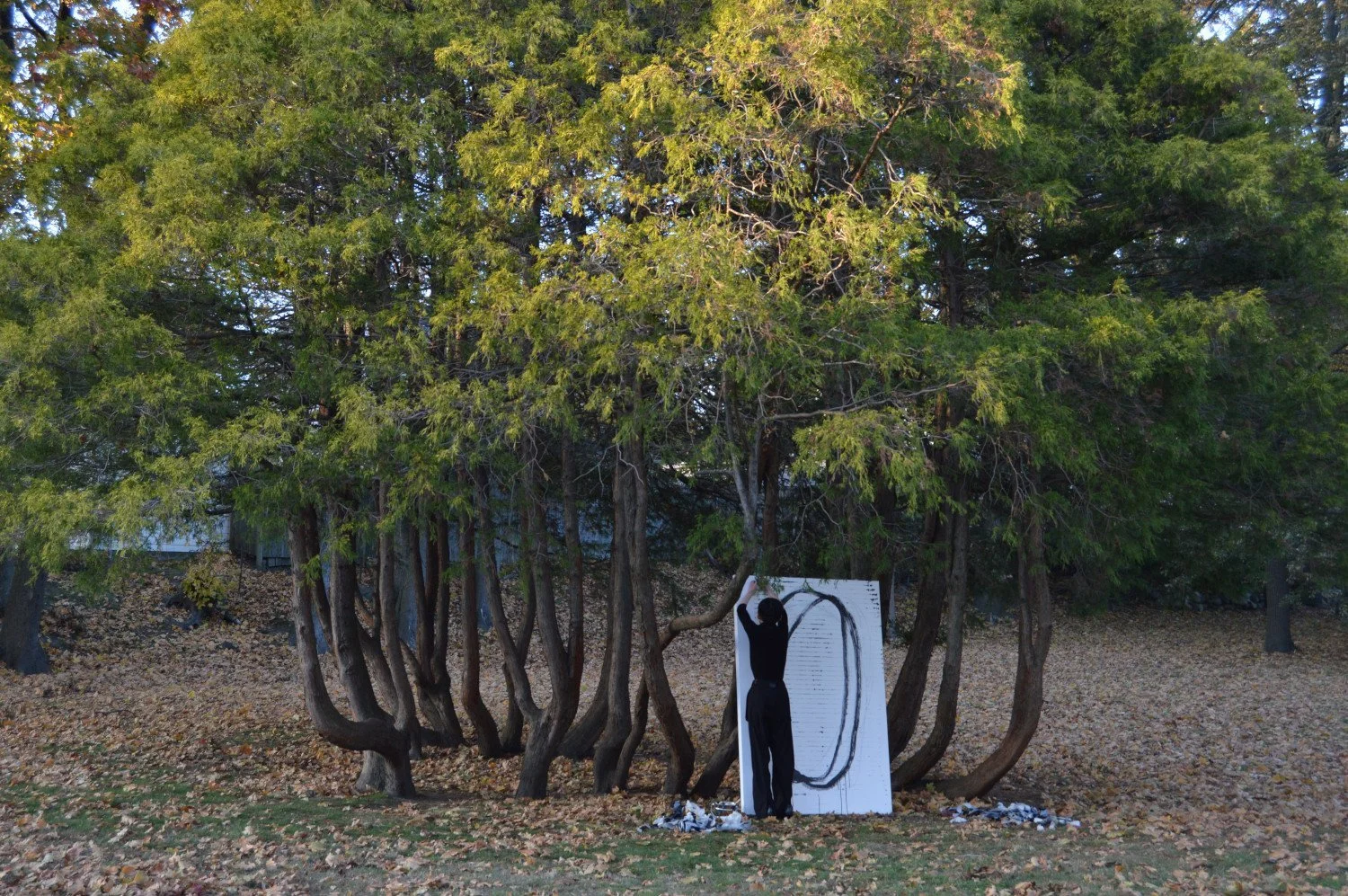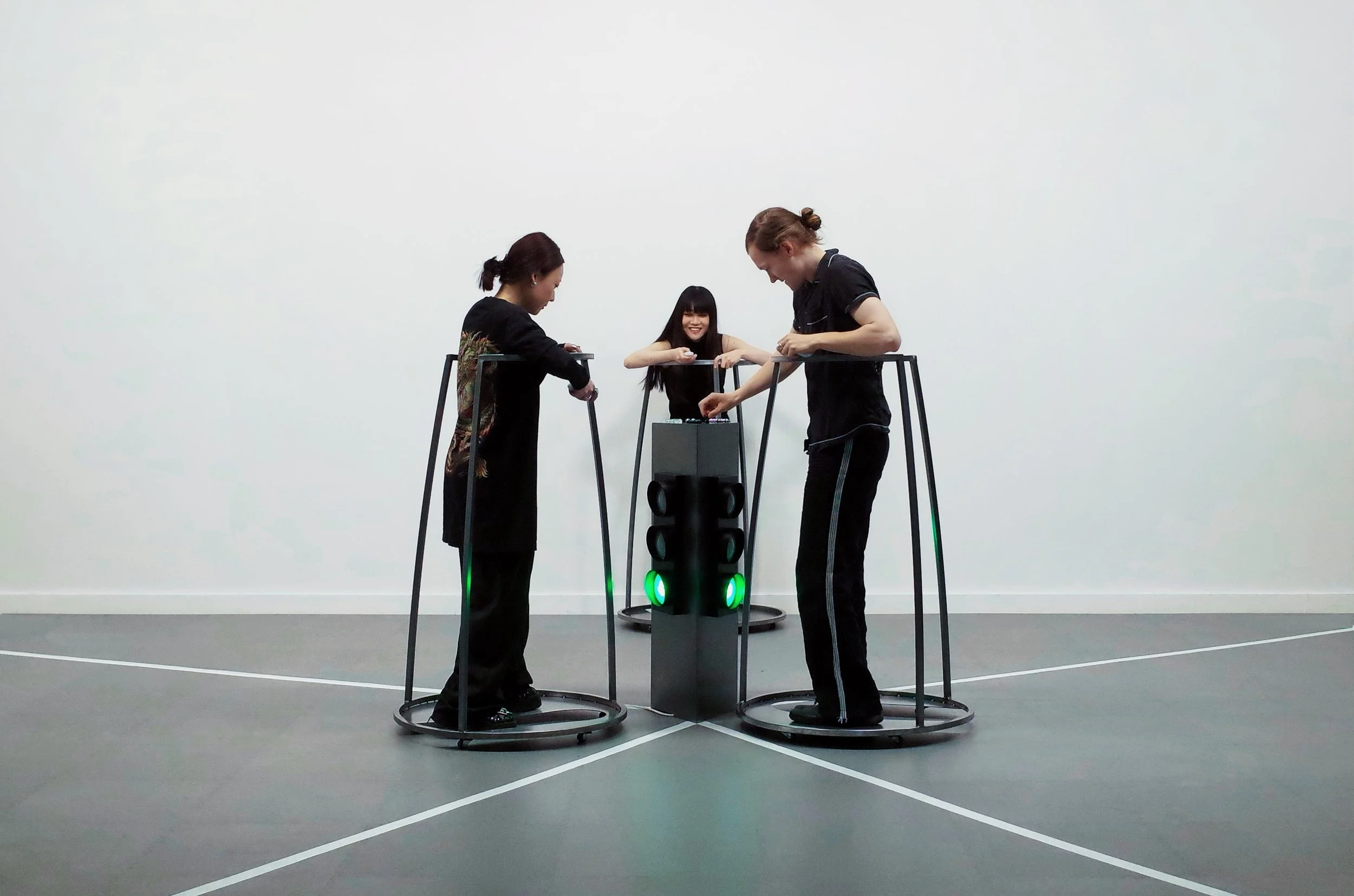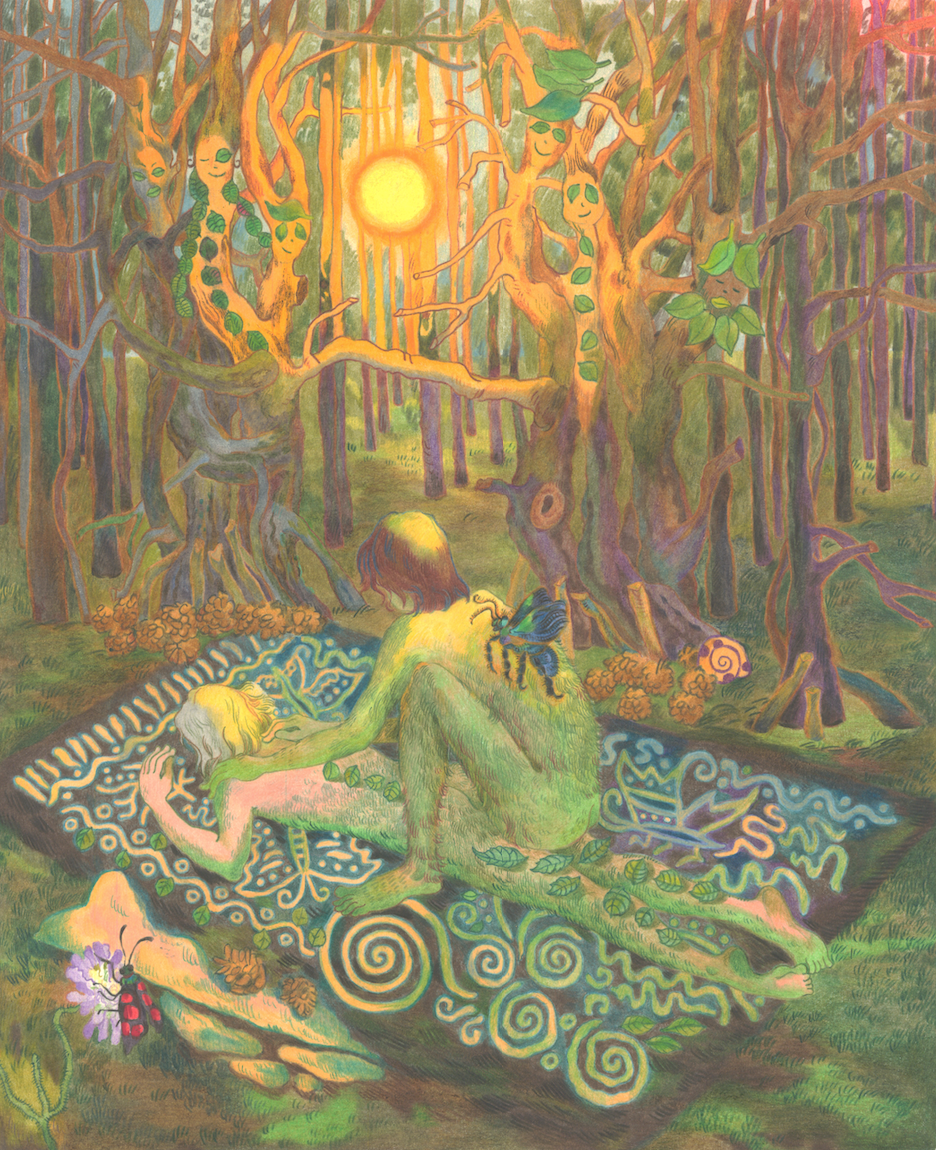10 Questions with Sophie Ruoyu Zhang
Sophie Ruoyu Zhang is a Chinese artist born in 1999, and currently lives in Brooklyn, NY, US.
Since techno-scientific mutations accelerate the evolution of natural and artificial life, the ability of "randomness," which responds quickly and flexibly to natural systems is thought-provoking. Since patterns or modes have always been an important condition in the process of our evolution, gradually, "randomization" in the literature world has also become more effective in the evolution of complex systems, such as asemic art and poetry.
By incorporating concepts from material-ecocriticism and post-humanism, "working as a 'diffraction apparatus'", her practices utilize multiple natural materials and are executed with both traditional and emerging media. Sophie Ruoyu's oil painting, printmaking, and performance respond to and reinterpret the natural objects that are in a limbo of recognition, permeating poetics, on the threshold of the subjecthood, the recognizable and the representable.
Her works are considered as diffraction apparatus--- to code and decode concepts and objects with the aspect of asemic arts, to achieve "words"/"scores" in symbiosis with humans, nature, and the autonomous poetics.
Sophie Ruoyu Zhang - Portrait
ARTIST STATEMENT
Since techno-scientific mutations accelerate the evolution of natural and artificial life, such "randomness" becomes a bubble of noise, an asemic fluid of noise, and the ability to respond quickly and flexibly to natural life systems is also attributed to this. Such noise exists as whispers in the body, which complicates communication between different levels of the biological system. Although the characteristics of these modes vary, it shall be agreed that "randomness" is an asemic aspect, not only as a lack of patterns and modes but also as a basis for inciting critical and creative relationships between nature and culture. Furthermore, asemic poetics in literature are mutually penetrable and permeable. All these cultural, literary, and art productions do not emerge in the void but in the process of our natural evolution in this post-human world.
"Working as a 'diffraction apparatus'", it is the aim for material ecocriticism to see these entanglements of thinking natural and the cultural simultaneously; such diffraction apparatus wants to be perceived as a critical trigger that enables us to think of the natural through the cultural and the cultural through the natural, reinforcing the 'compositional' structure of the human world to humans themselves. Since patterns or modes have always been an important condition in the process of our evolution as living things, gradually, "randomization" in the literature world has also become more effective in the evolution of complex systems, such as asemic art and poetry. The overall interdisciplinary collaboration of Sophie's works means building up a hierarchy considering asemic poetics in both absurd and thoughtful ways. Her works is supposed to imply action and "interaction", performative but still, improvisational but considerate. The achievement of "words" in symbiosis with humans, nature, and autonomous poetics will add new perspectives to art by incorporating ideas from other disciplines such as post-nature and material ecocriticism.
NapawalkonRed 5/36, One channel video installation, 2019 © Sophie Ruoyu Zhang
Get your limited edition copy now
INTERVIEW
First of all, introduce yourself to our readers. Could you tell us a little more about your background and how you began making art?
I was born in Chongqing, China. Although I was not raised in an artistic home and my environment was not favorable to artistic endeavors, I enjoy creating and writing in my own time. I chose to develop my artistic abilities beginning in the middle of my senior year of high school.
How would you define yourself as an artist? And what makes you unique?
I'm a multidisciplinary artist. The most distinctive part of my works is likely the use of napa cabbage in nearly every subject. As a means of contextualizing my works, it consists not only of the organic material napa cabbage but also of a shift toward posthumanism. My body aesthetics and image politics adhere to a stage of the new communication revolution, a post-human drama based on the evolution of the human non-human, nature, and technology. As a diffraction apparatus, Napa cabbage is used to code and decode concepts and things "through one another in ways that help illuminate differences as they develop."
O1, one channel performance, 29’54’’, 2019 © Sophie Ruoyu Zhang
O1, acrylic, graphite on canvas, 48 x 72 in, 2019 © Sophie Ruoyu Zhang
You work with different techniques and mediums, such as installation and oil painting. Can you guide us through your creative process?
For my raw paints on canvas paintings, the figures will be my paints and the traces they left, using asemic scores or concrete poetics as a performative representational device. Considering the atmosphere of the ground and the rational and irrational/embodied and disembodied execution of my figures or marks, I use semi-raw materials such as coffee, cochineal insects, and wine as a ground. When I go from painting to printmaking, the "chaotic" moments of my scores/marks become photographically silent; these prints are documented statically in a spectral archive sense. To explain, all of these figures, grounds and scores fall under the purview of asemic art and poetry. As "asemic writing is writing that does not attempt to communicate any message other than its own nature as writing... 'a shadow, impression, and abstraction of conventional writing". Painting and writing, scores, and languages will have originated from the same gesture that was neither figurative nor semantic but rather rhythmic. In my paintings, asemic scores are interpreted as tangible and literal rhythms. However, in my sound works, video installations, and performances, these scores are interpreted in a more sensorial and interactive manner.
How much planning goes into each work, and where do you find inspiration?
There are several plans for the different disciplines. For paintings, the procedure resembles the accumulation of words, phrases, tones, and wine to create poetry. Consequently, it is both logical and improvised and is frequently a very slow process. Printmaking is more similar to photography. For performance pieces, the chronology is comparable to that of my paintings, but the materials and "textures" are different.
When creating your art, do you have a role model or an artist you particularly look up to?
I currently have neither a conceptual nor a stylistic role model, which I can look up. I will say that I rely heavily on the way and idea of asemic arts and poetry, while I do appreciate the handling of materials and the cooperation of colors, objects, music, settings, etc., to the concepts of many other artists.
Archive #11, monotype, 14 x 16 in, 2020 © Sophie Ruoyu Zhang
Let's talk about the main themes behind your art. What messages are you trying to convey?
Under the influence of material ecocriticism, the overarching multidisciplinary partnership of my works aims to establish a hierarchy that takes asemic poetics into account in both absurd and profound ways. Such articulation also verifies that each asemic score is self-atomized but capable of retaining a cohesive voice so long as they are combined as a whole. My works occur during this transition stage and respond to or even reinterpret the natural objects that are in a condition of recognition limbo, permeating poetics, on the threshold of subjectivity, the recognized, and the representable. In this instance, the articulation of my works can gain access to a state of coexistence and co-diversity: rhythm and interpunction as scores, sophrosyne as fossils, fluid as a blank, and grounds as a surface. This occurred when I directed my paints, napa cabbage, and brush marks to compose figures and ground, rhythm and poetry in the form of asemic writing; or when I eliminated myself but exaggerated the action and responses from napa cabbage, site-specific environments, and even translated poems to murmurs sound from Google Translate.
In your statement, you quote ecocriticism and post-nature. Can you tell us more about these concepts? And how do you incorporate them into your work?
In my works, I always refer to working as a 'diffraction apparatus'. It is the goal of material ecocriticism to see these entanglements of thinking about the natural and the cultural simultaneously. This diffraction apparatus is intended to be viewed as a critical trigger that enables us to think of the natural through the cultural and the cultural through the natural, thereby reinforcing the 'compositional' structure of the human world to humans themselves. Before the end of the 1970s, terrestrial ecology primarily involved the literary study of non-human organisms and planets. Prior to that, terrestrial ecology was considered as "subjects devoid of subjectivity - symbolically present, but absent as tangible creatures, material actors." Then Serenella Lovino pointed out Rueckert's perspective, namely, that "The world in which we teach and study literature, as well as the world in which literature is produced, is the same world in which humans and countless other species and beings exist. What physically affects this universe influences all of its activities, including our intellectual and artistic creations." Since patterns or modes have always played a significant role in the evolution of biological things, "randomization" has steadily grown more successful in the formation of complex systems, such as asemic art and poetry.
行星共同體#2, Oil, cochineal insects, coffee, napa cabbage on canvas, 54 x 42 in, 2021 © Sophie Ruoyu Zhang
Underwater Ground Disco, oil, coffee, napa cabbage on canvas, 36 x 25 in, 2021 © Sophie Ruoyu Zhang
Underwater Ground Disco#2, oil, coffee, napa cabbage on canvas, 66 x 48 in, 2021 © Sophie Ruoyu Zhang
You are very young and probably grew up with social media and the internet. What do you think of digital exhibitions and presentations? And where do you prefer to exhibit your work, online or offline?
I had the impression that I was really low-key when I was young. Prior to entering senior high school, social media and the internet did not influence my behavior. As previously stated, I am a multidisciplinary artist, yet all of my digital works are tied to my physical paintings, prints, etc. All of them contribute to the same concept. Even if they were built on separate platforms, they all share the same spectrum. In an ideal situation, they would be put in the same location for this chat. For such a setting, offline will be the optimal medium for thorough communication across all of my works' disciplines. Because my tangible works, such as paintings and prints, contain numerous textures and layers that cannot be viewed on a digital display. However, if solely my video performance pieces and poetry are on display, an online exhibition would be a good option. I believe the nature of digital exhibitions is contingent on what artists wish to communicate, how their works are exhibited, and how they see space in relation to their works.
What do you hope to accomplish this year, both in terms of career goals and personal life?
In addition to my artistic approach, I wish to complete a new collection of poetry as a continuation of my first book. In addition, collaborating with more international galleries and establishing my personal language in my works will always be on my agenda.
Finally, what are you working on right now? Anything exciting you would like to tell our readers?
This year, I am mostly experimenting with colors, textures, and media for my presentations. Currently, I am launching a series of new creations that adhere to the aforementioned ideals and napa cabbage.























